Equipment
Graphite shafts in irons, the final frontier?

By Trevor Gliwski
GolfWRX Contributor
Click here for more discussion in the “Clubmaking forum”
Technology in golf has evolved at a frenetic pace in the past decade. Golf balls, driver heads and even groove designs have reached new heights and in most cases reached their governed limits.
Perhaps the last frontier of performance in golf is composite graphite shaft technology, particularly iron shafts. Golf is the last major sport that hasn’t opted for composites in a wholesale approach, choosing to hold on to the older, cheaper steel shafts. Of all the hockey sticks in the NHL, 100 percent of the players use composite graphite hockey sticks and the Tour De France contestants all ride composite graphite bicycles. Major league baseball cannot move to composite graphite because it would make all baseball parks obsolete. Professional golf tour usage of composite graphite reflects this shift in technology in terms of woods, but has a much lower percentage of usage in irons. According to the Darrell Survey 99 percent of woods played on the PGA Tour are composite graphite, while only 12 percent of graphite is played in irons.
Whenever the concept of why a professional or good amateur player isn’t playing graphite in their irons, the usual statement is that “steel is more consistent than graphite.” The most peculiar thing about that statement is that your driver and woods are statistically less consistent than irons in a natural way. The greater the distance from the target, the longer the shaft length and the wider the dispersion pattern. This is why the NBA awards three points from behind the three-point line and only two points for closer shots.
Chris Nolan, executive vice president of global operations for Matrix Shafts, said that not all graphite shafts are created equal, but when designed and manufactured properly, the composite materials available today provide superior structures when compared to steel in both dispersion and distance control. Daniel You, chief designer and engineer for Matrix Shafts, added that when comparing composites to steel, composite materials of equal weight to steel are up to six times stronger, allowing designers much greater latitude in their designs while providing superior overall structures. Additionally, the ability to cross-pollinate each shaft with varied materials such as in Matrix’s Inter-ply technology allows for structures that may have a similar design function while possessing a difference in feel alone. You also said that from a design standpoint, graphite allows him a significantly greater amount of possibilities for different overall weights, flex points, tip stiffness, balance points and torque.
TJ Shelton, director of the Rick Smith Golf Academy Fitting Center, hitting a 6 iron in the pictures below. On the left (red shirt), Shelton is hitting a leading brand’s steel shaft (stiff). On the right (blue shirt), he is hitting a matrix program 130 graphite shaft (stiff). Both shots were solid, the pictures are eye opening.
From a teaching standpoint, graphite allows for a much wider range of weight and profile playing characteristics. For these reasons, I have an overwhelmingly better ability to get my student’s equipment to a place where they not only hit it better immediately, but also help their golf swing dynamics to develop long term. One of the most common examples of how critical this is to my teaching is that many players who cast from the top of their swing and scoop at impact are able to retain wrist cock and create lag, in many cases, much easier when they swing a much lighter shaft. It is not unusual to see a player’s swing dynamics improve instantaneously. We quickly start to see an increased attack angle and lower dynamic loft as well as improved visual dynamics on video.
A great analogy of how weight affects dynamics in the golf swing is to compare it to bowling. If you grab a ball that is too heavy you will drop it behind you — too light and it might fly through the air. Most of us have a dynamic need for a certain weight that allows us to release at the proper point in the stroke. In bowling that weight is measured in pounds. In golf it’s measured in grams. Although having a club that is perfect for your dynamic needs does not guarantee a perfect swing, a club that is not in your wheel house of overall weight, swing weight and flex gives you almost no chance of anything good happening consistently.
Composite graphite has improved astronomically since it was first introduced to golf shafts in 1977. It was put in play for good players way too early. Yes, they immediately hit the ball farther, but because the stability wasn’t there dispersion patterns were enormous and as a result graphite shafts were quickly pegged as “inconsistent.” In 2012, graphite composite shaft technology is in a whole new league. In fact, the graphite composite used in the first space shuttle is not considered good enough for a K-mart club by today’s standards. It is crazy that the stigmatism of graphite continues to exist even after today’s extensive research. However, slowly but surely, much like persimmon woods going to metal, it will begin to disappear forever.
Click here for more discussion in the “Clubmaking forum”
Trevor Gliwski is the Director of Instruction for The Rick Smith Golf Academy at Tiburon Golf Club in The Ritz-Carlton Golf Resort Naples, Fla. He is a Matrix Shafts Advisory Board Member and the 2009 South West Florida Chapter Teacher of the Year.
- LIKE5
- LEGIT1
- WOW2
- LOL0
- IDHT0
- FLOP0
- OB0
- SHANK0
Whats in the Bag
Kevin Tway WITB 2024 (May)
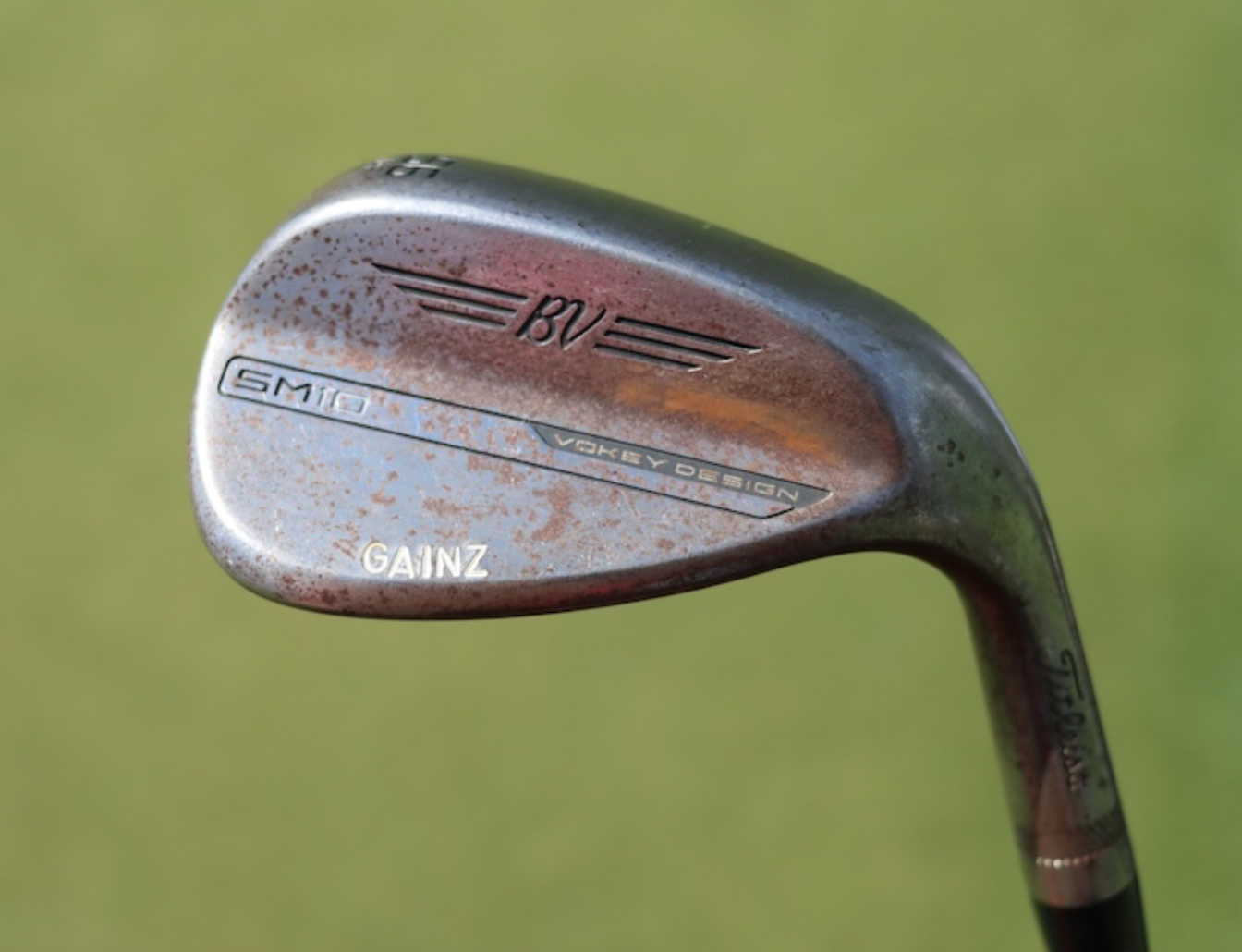
- Kevin Tway what’s in the bag accurate as of the Wells Fargo Championship. More photos from the event here.
Driver: Ping G430 LST (10.5 degrees)
Shaft: Fujikura Ventus Black 6 X
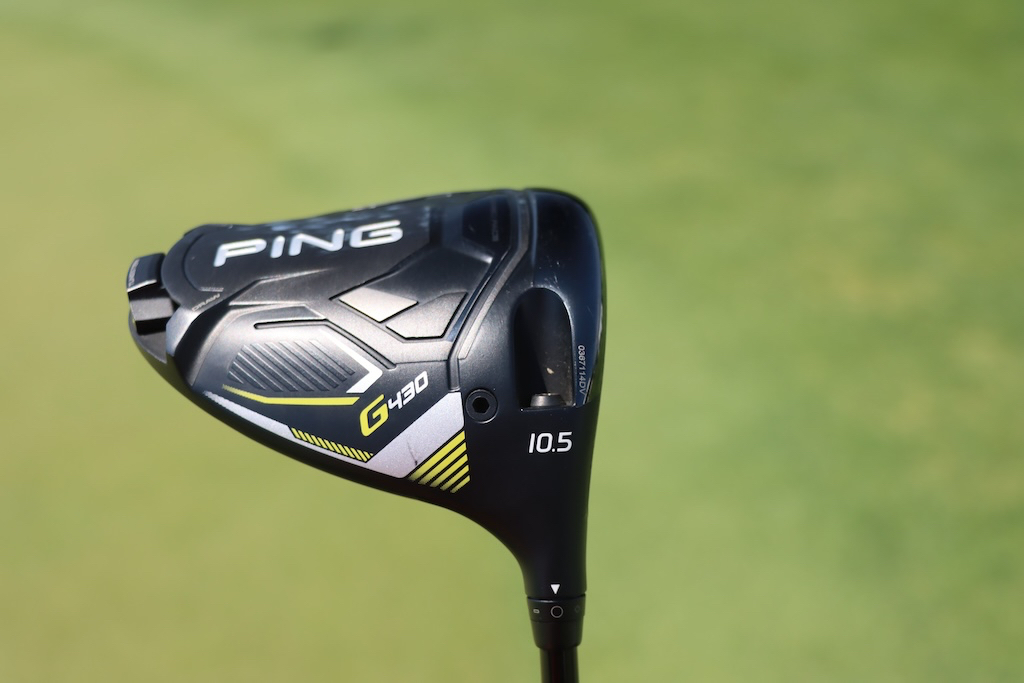
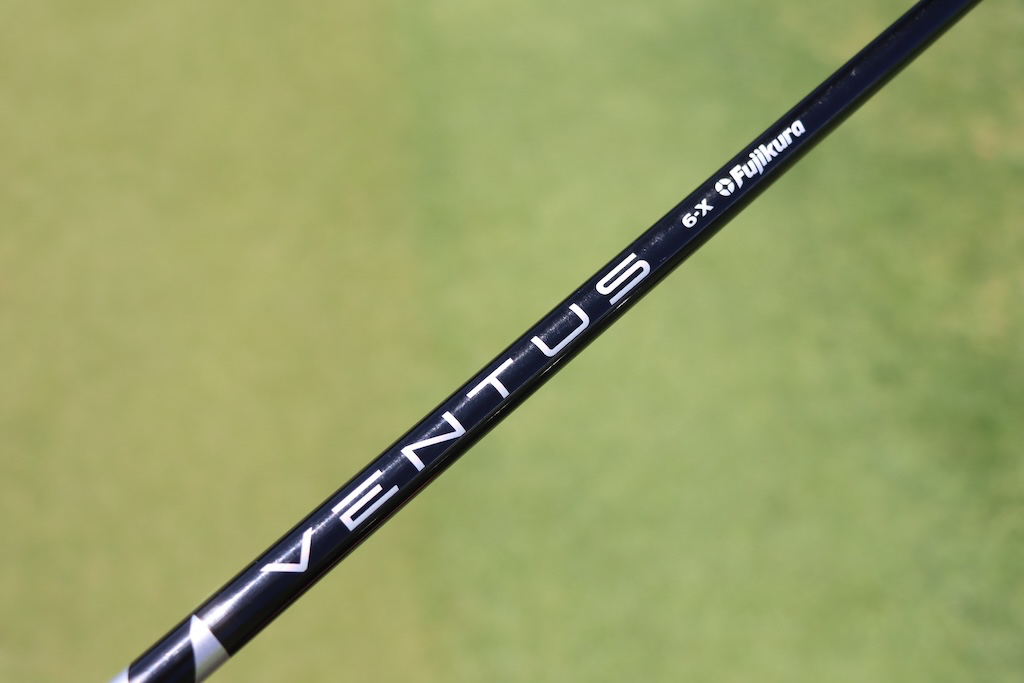
3-wood: TaylorMade Stealth 2 (15 degrees)
Shaft: Mitsubishi Diamana D+ 80 TX
5-wood: TaylorMade Stealth 2 (18 degrees)
Shaft: Mitsubishi Diamana D+ 90 TX
Irons: Wilson Staff Utility (2), Titleist T100 (4-9)
Shafts: Mitsubishi MMT 100 TX (2), True Temper Dynamic Gold Tour Issue X100 (4-9)
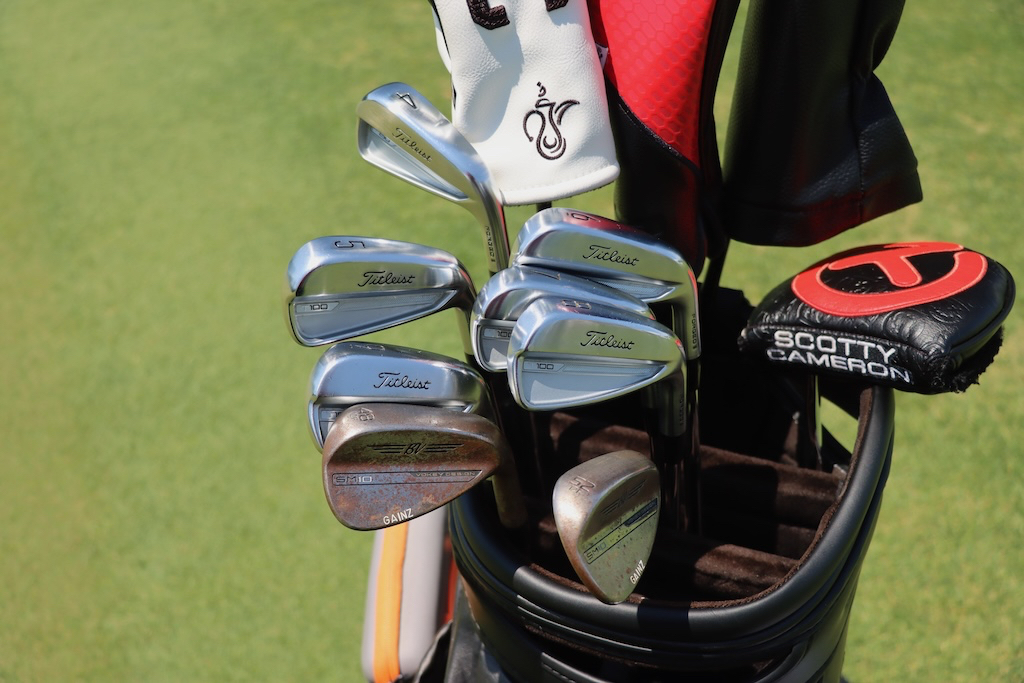
Wedges: Titleist Vokey Design SM10 (48-10F @47, 52-12F @51, 56-14F), SM7 (60-10S)
Shafts: True Temper Dynamic Gold Tour Issue X100 (48-56), True Temper Dynamic Gold Tour Issue S400 (60)
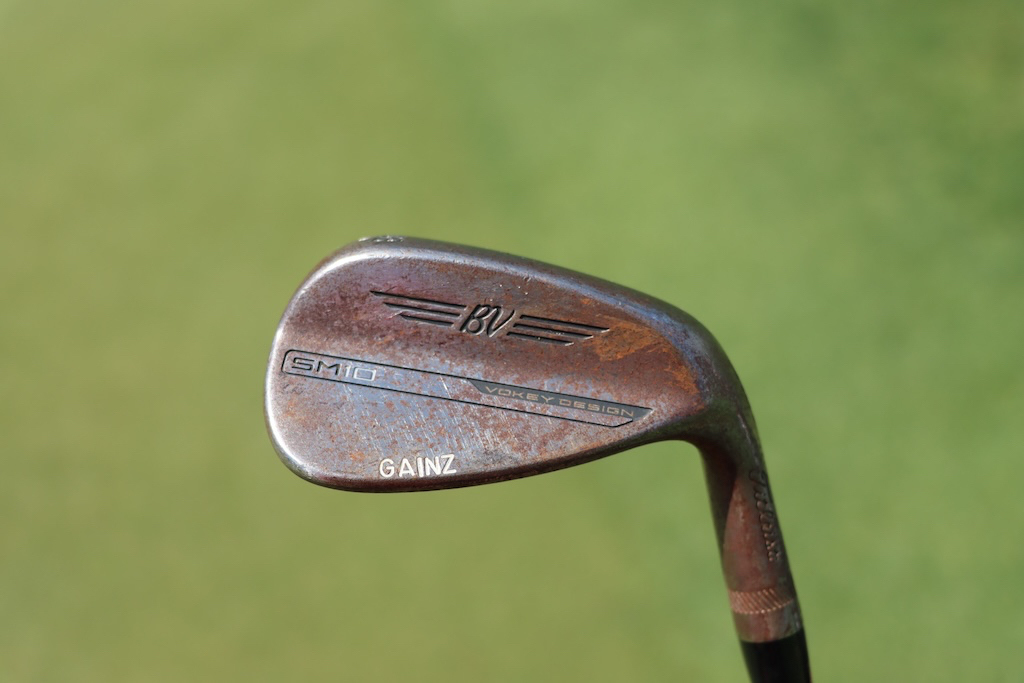
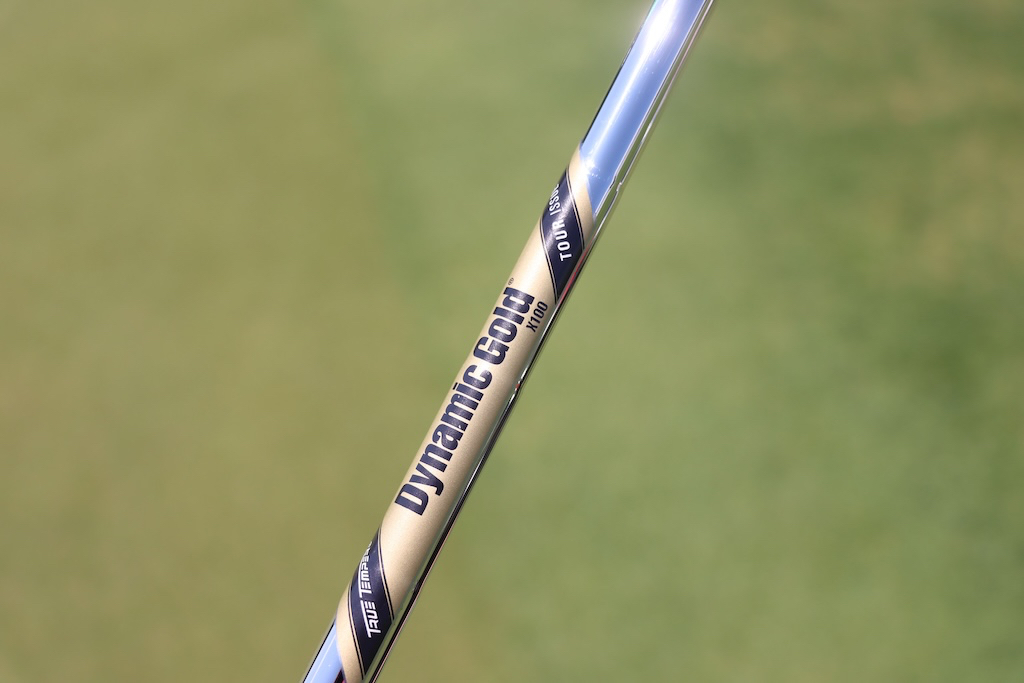
Putter: Scotty Cameron T-5 Proto
Grip: Scotty Cameron Black Baby T
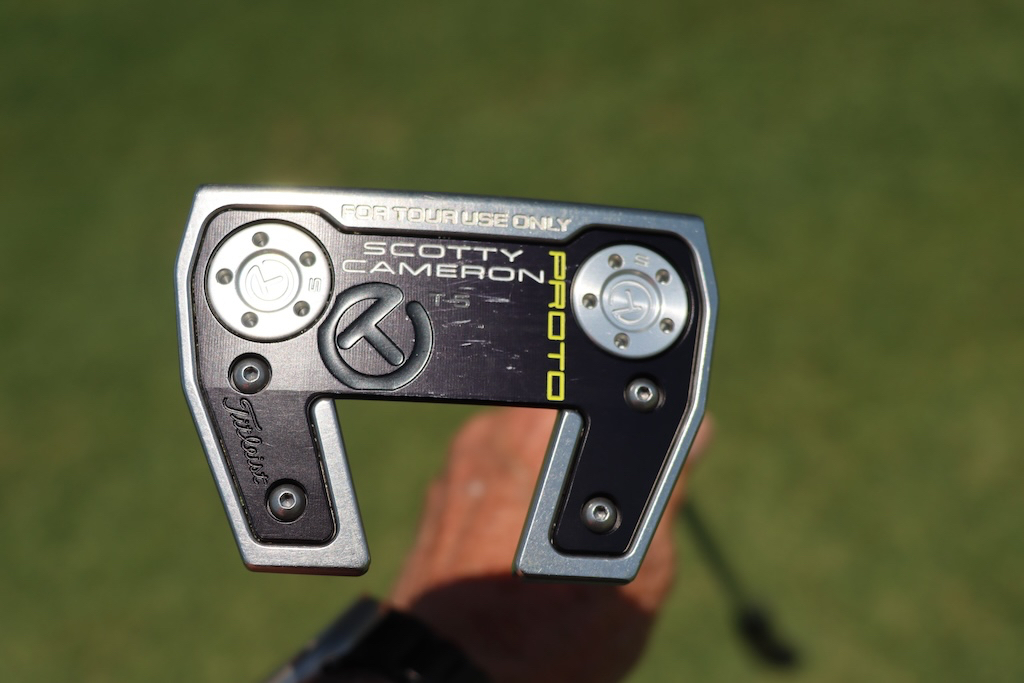
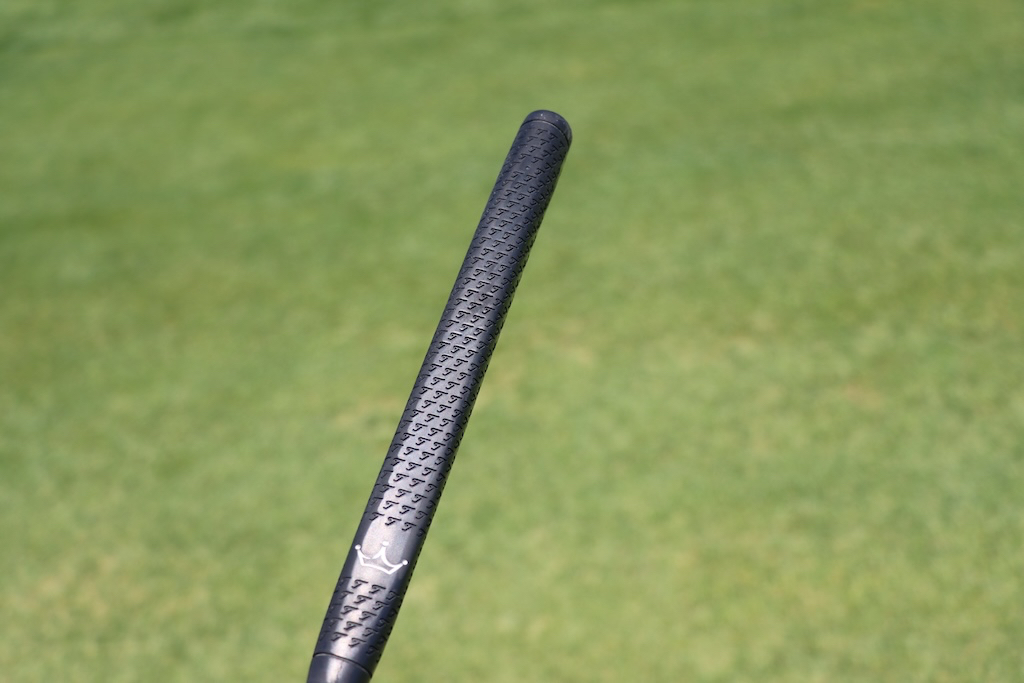
Grips: Golf Pride Tour Velvet Plus4
More photos of Kevin Tway’s WITB in the forums.
- LIKE0
- LEGIT0
- WOW0
- LOL0
- IDHT0
- FLOP0
- OB0
- SHANK0
Equipment
Did Rory McIlroy inspire Shane Lowry’s putter switch?
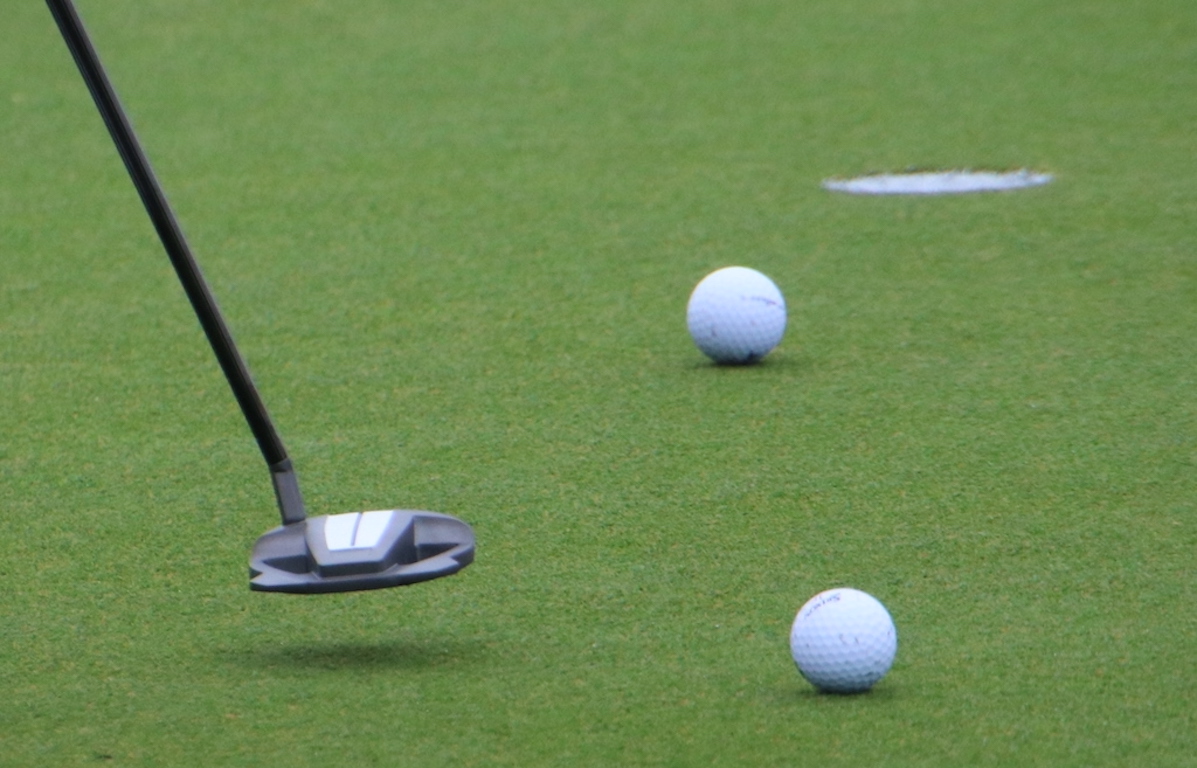
Editor’s note: This is an excerpt from a piece our Andrew Tursky originally wrote for PGATour.com’s Equipment Report. Head over there for the full article.
The timing of Lowry’s putter changeup was curious: Was he just using a Spider putter because he was paired with McIlroy, who’s been using a Spider Tour X head throughout 2024? Was Lowry just being festive because it’s the Zurich Classic, and he wanted to match his teammate? Did McIlroy let Lowry try his putter, and he liked it so much he actually switched into it?
Well, as it turns out, McIlroy’s only influence was inspiring Lowry to make more putts.
When asked if McIlroy had an influence on the putter switch, Lowry had this to say: “No, it’s actually a different putter than what he uses. Maybe there was more pressure there because I needed to hole some more putts if we wanted to win,” he said with a laugh.
To Lowry’s point, McIlroy plays the Tour X model, whereas Lowry switched into the Tour Z model, which has a sleeker shape in comparison, and the two sole weights of the club are more towards the face.
Lowry’s Spider Tour Z has a white True Path Alignment channel on the crown of his putter, which is reminiscent of Lowry’s former 2-ball designs, thus helping to provide a comfort factor despite the departure from his norm. Instead of a double-bend hosel, which Lowry used in his 2-ball putters, his new Spider Tour Z is designed with a short slant neck.
“I’ve been struggling on the greens, and I just needed something with a fresh look,” Lowry told GolfWRX.com on Wednesday at the 2024 Wells Fargo Championship. “It has a different neck on it, as well, so it moves a bit differently, but it’s similar. It has a white line on the back of it [like my 2-ball], and it’s a mallet style. So it’s not too drastic of a change.
“I just picked it up on the putting green and I liked the look of it, so I was like, ‘Let’s give it a go.’”
Read the rest of the piece over at PGATour.com.
- LIKE0
- LEGIT0
- WOW0
- LOL0
- IDHT0
- FLOP0
- OB0
- SHANK0
Equipment
Webb Simpson equipment Q&A: Titleist’s new 2-wood, 680 blade irons, and switching to a broomstick Jailbird
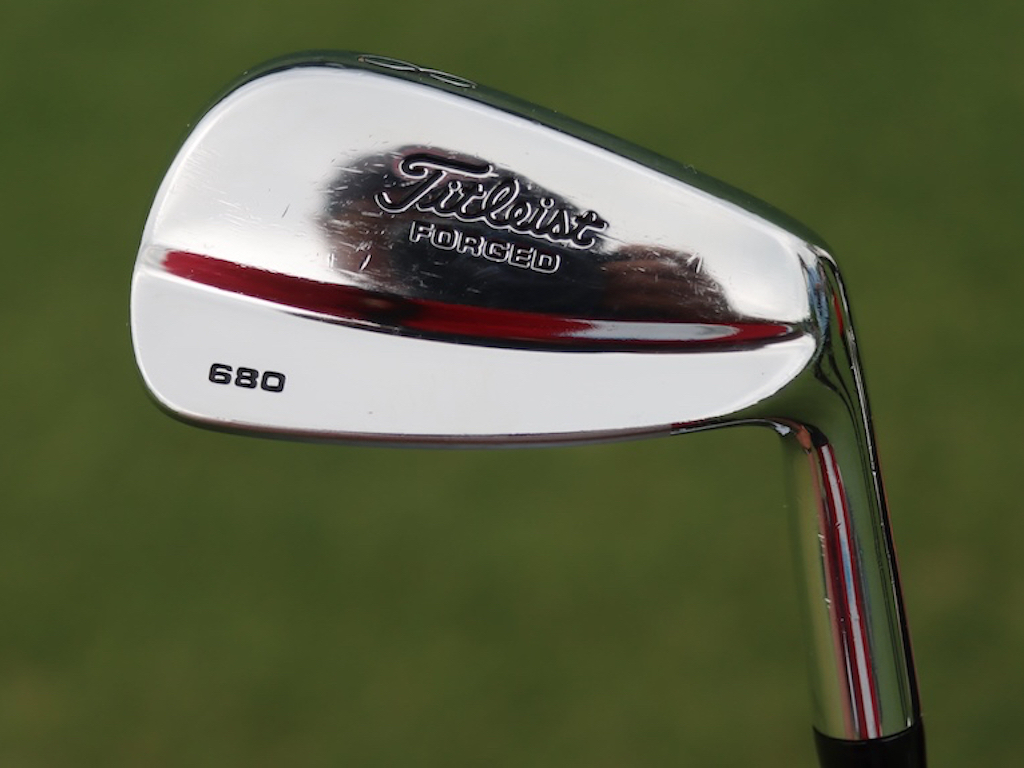
With seven career wins on the PGA Tour, including a U.S. Open victory, Webb Simpson is a certified veteran on the course. But he’s also a certified veteran in the equipment world, too. He’s a gearhead who truly knows his stuff, and he’s even worked closely with Titleist on making his own custom 682.WS irons.
On Wednesday at the 2024 Wells Fargo Championship, I caught up with Simpson to hear about his experience with Titleist’s new prototype 2-wood, how Titleist’s 680 Forged irons from 2003 ended up back in his bag, and why he’s switching into an Odyssey Ai-One Jailbird Cruiser broomstick putter this week for the first time.
Click here to read our full story about Simpson’s putter switch on PGATOUR.com’s Equipment Report, or continue reading below for my full Q&A with Simpson at Quail Hollow Club on Wednesday.
See Webb Simpson’s full WITB from the 2024 Wells Fargo Championship here
GolfWRX: It seems like you’ve been a little all over the place with your irons in the past six months or so, and now going back to the 680’s. Is that just a comfort thing? What’s been going on with the irons?
Webb Simpson: Titleist has been so great at working with me, and R&D, on trying to get an iron that kind of modernizes the 680. And so the 682.WS took the T100 grooves, but kinda took the look and the bulk and the build of the 680’s into one club. They’re beautiful, and awesome looking. I just never hit them that well for a consistent period of time. It was probably me, but then I went to T100’s and loved them. I loved the spin, the trajectory, the yardage, but again, I never went on good runs. Going through the ground, I couldn’t feel the club as well as with the blade. So last week, I’m like, ‘Alright. I’m gonna go back more for…comfort, and see if I can get on a nice little run of ball striking.’
So that’s why I went back.
View this post on Instagram
OK, that makes sense. I know you had done some 2-wood testing recently. Is that in the bag right now?
It’s like day-by-day. I used it at Hilton Head every day. Valero, I used it one round. And this week, me and my caddie will do the book every morning, and if it’s a day where we think we need it, we’ll just put it in and take the 3-wood out. I love it because it’s a super simple swap. Like, it doesn’t really change much.
Yeah, can you tell me about that club? I mean, we don’t really know anything about it yet. You know? I haven’t hit it or anything, obviously.
It has grooves like a 3-wood. Spin is perfect. And it’s honestly, like, everything is in the middle of a 3-wood and driver number. Trajectory, spin, carry, all of it. So, a Hilton Head golf course is almost too easy to talk about because, you know, there, so many holes are driver 3-wood.
Valero, our thinking was we had two par-5’s into the wind, and we knew that it would take two great shots to get there in two. So instead of hitting driver-driver, we just put it in. And I used it on those holes.
Hilton was a little easier because it was off-the-tee kind of questions. But Colonial will be a golf course where, you know, there’s a lot of driver or 3-woods. It’s kind of like a backup putter or driver for me now. I’ll bring it to every tournament.
So it’s, like, in your locker right now, probably?
Well, it would be. It’s in my house [because Webb lives near by Quail Hollow Club, and is a member at the course.] It’s in the garage.
Oh, yeah, that’s right. Do you know what holes you might use it out here if it goes in play?
Potentially 15, depending on the wind. Second shot on 10. Could be 14 off the tee. The chances here are pretty low (that he’ll use the 2-wood). But, like, Greensboro would be an awesome club all day. I’m trying to think of any other golf courses.
There’s plenty that it’ll be a nice weapon to have.
It’s interesting, the wave of 2-woods and mini drivers. Like, it’s just really taken off on Tour, and all the companies have seemed to embrace it.
Yeah. The thing I had to learn, it took me, like, at least a week to learn about it is you gotta tee it up lower than you think. I kept teeing it up too high. You need it low, like barely higher than a 3-wood. And that was where I got optimal spin and carry. If you tee it up too high, you just don’t get as much spin and lose distance, I don’t know if that’s just a mini driver thing.
And you obviously have a Jailbird putter this week. What spurred that on?
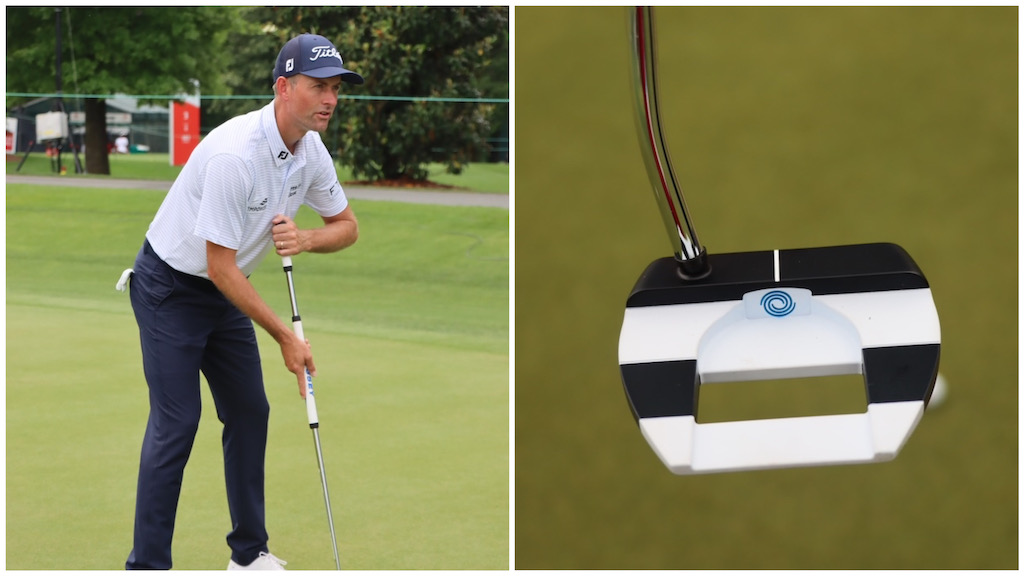
Inconsistent putting. I’m stubborn in a lot of ways when it comes to my equipment, but I have to be open minded – I just hadn’t putted consistently well in a while. And I’m like, ‘Man, I feel my ball-striking coming along. Like I feel better; for real, better.’
If I can just get something in my hands that I’m consistent with. Being on Tour, you see it every year, guys get on little runs. I can put together four to five tournaments where I’m all the sudden back in the majors, or in the FedExCup Playoffs. You can turn things around quick out here. I’m like, ‘Man, whatever’s going to get me there, great.’
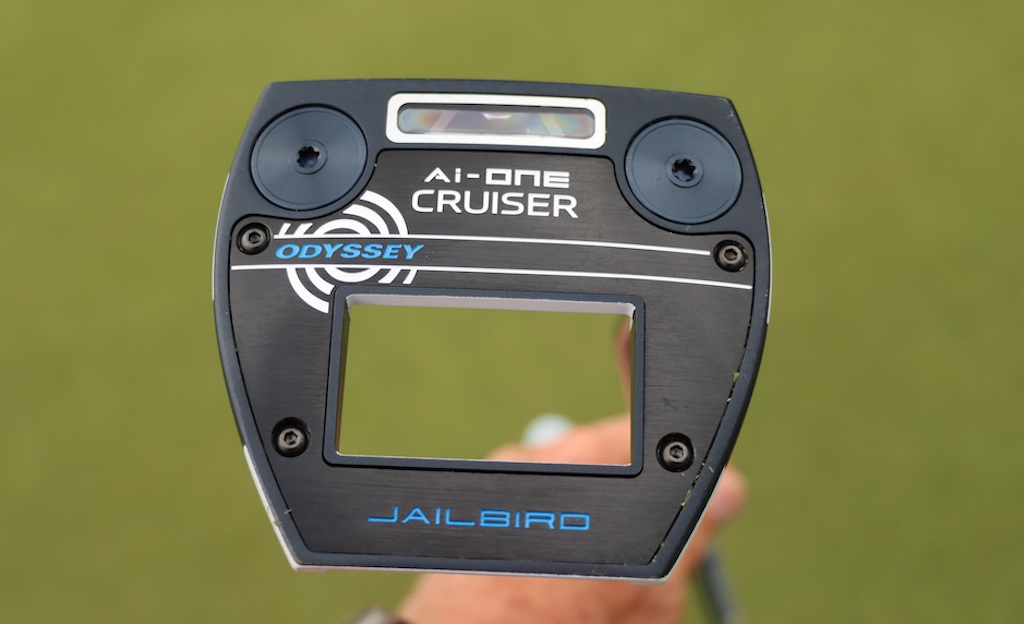
My caddie, David Cook, caddied for Akshay at the Houston Open and he putted beautifully. Then, I watched Akshay on TV at Valero, and he putted beautifully. And, I’m like, ‘I’m just going to try it.’
I’ve never tried it for more than a putt or two, and I just ordered what Akshay uses. It was pretty awkward at first, but the more I used it, the more I’m like, ‘Man, it’s pretty easy.’ And a buddy of mine who’s a rep out here, John Tyler Griffin, he helped me with some setup stuff. And he said at Hilton Head, he wasn’t putting well, then tried it, and now he makes everything. He was very confident. So I’m like, ‘Alright, I’ll try it.’”
And you’re going with it this week?
Hundred percent.
Alright, I love it. Thank you, I always love talking gear with you. Play well this week.
Thanks, man.
See Webb Simpson’s full WITB from the 2024 Wells Fargo Championship here
- LIKE26
- LEGIT3
- WOW1
- LOL2
- IDHT0
- FLOP0
- OB0
- SHANK2
-

 19th Hole3 weeks ago
19th Hole3 weeks agoJustin Thomas on the equipment choice of Scottie Scheffler that he thinks is ‘weird’
-

 19th Hole3 weeks ago
19th Hole3 weeks ago‘Absolutely crazy’ – Major champ lays into Patrick Cantlay over his decision on final hole of RBC Heritage
-

 19th Hole2 weeks ago
19th Hole2 weeks agoLET pro gives detailed financial breakdown of first week on tour…and the net result may shock you
-

 19th Hole3 days ago
19th Hole3 days agoReport: LIV star turns down PGA Championship invite due to ‘personal commitments’
-

 19th Hole1 week ago
19th Hole1 week agoGary Player claims this is what ‘completely ruined’ Tiger Woods’ career
-

 Whats in the Bag2 weeks ago
Whats in the Bag2 weeks agoTeam McIlowry (Rory McIlroy, Shane Lowry) winning WITBs: 2024 Zurich Classic
-

 Equipment1 week ago
Equipment1 week agoGolf fans left surprised by LIV’s choice of course for its 2024 individual championship event
-

 19th Hole1 week ago
19th Hole1 week agoLIV star splits with swing coach after working together for 14 years

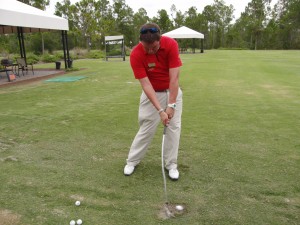
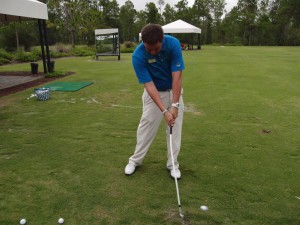



















WmTipton
Oct 4, 2012 at 11:36 am
I do a little club building on the side and while Im a rookie golfer I have definitely noticed that graphite shafts gain distance but at a cost of accuracy.
The only graphite shaft Ive used that seemed to even touch the accuracy of my steel shafts was so stiff and rigid and heavy that it may as well have been steel.
Im not bashing graphite, not in the least, but as a newer player I personally feel that my game needs the accuracy over distance for now.
I was using graphite shafted Cobra driver I bought last year for driving and was losing half a dozen balls per round.
I took the graphite out of the head and reshafted it with a low end ($5) Apollo steel shaft cut as stiff as possible and shortened to 42.5″ (the shaft itself) and the next two rounds I lost maybe one ball per round and kept almost every tee shot with it either dead down the fairway or in the first cut of rough.
Im a beginner, but even I have seen the evidence that steel is more accurate over graphite, so I can understand why the pro’s stick to steel in their irons.
Wanda
Nov 5, 2012 at 2:09 am
You sure do know what you’re talking about. Man, this blog is just great! I can’t wait to read more of what you’ve got to say. I’m relaly happy that I came across this when I did because I was relaly starting to get bored with the whole blogging scene. You’ve turned me around, man!
Robin Arthur
Aug 14, 2012 at 5:12 pm
Greetings –
It’s great you folks are arguing camera attributes in an effort to get the real “picture”…but I think missing the point of Trevor’s comments which for the most part are accurate. Maybe the picture is perhaps an exaggeration of the bends, but I don’t think to any degree that makes them irrevelent. I remember a slo-mo shot of Michelson’s 5-iron in GDigest w/in the last year…and it showed an almost identical fwd. bend, maybe not quite as pronounced but eye-opening none the less.
In a golf swing, given the offsets of center of gravities of the head, the offset axis of the shaft to the CG of the head, the tensile and centrifugal (and even centripetal) forces being applied to the shaft – all relate to the bending dynamics through out the swing and esp. at impact. The mechanical properties of each of the three components of the club system – shaft, head and grip obviously affect those bending dynamics as well.
But that’s just part of the story. First a couple comments on the history of carbon fiber (graphite) shafts.
While it’s true that the first graphite shafts were the rage because of increased distance but were quickly discounted because of dispersion; but also because of shaft-to-shaft consistency. The reasons for this are simple.
1 – the designers at the time had zero idea of the influence on torsional resistance in their shaft designs and how it affected both longitudinal bending and twisting during the swing and at impact. Some of the first shafts were 6+ degrees of “torque” – although in classical engineering terms the way the golf industry uses that vernacular is incorrect…
2 – manufacturing techniques were not up to par either. It’s a fact that most companies in those days and even into the early ’90s designed very stiff shafts and simply sanded them to a particular flex. Can you imagine trying to take an X-flex and manually sanding it consistently to say an S-flex, or weaker flex? Hardly an ideal manufacturing technique for process control.
Now fast forward to the mid-’90s and the introduction of shafts like Loomis’ tour irons and even my LBPs irons (low balance points) into the Tour ranks. Again, there were two problems w/ these shafts….well actually three.
1 – to get the shafts heavy enough, Mr. Loomis/his Tech. Director Jeff Meyer and myself had to make the walls of the shafts SO thick to get the weight up that the result was a composite structure that dampened SO much of the energy supplied by a Tour pro, that the feel/feedback was so unlike a steel shaft and even sometimes called “dead”. Great players in any sport rely lot on feel and feedback and if that’s minimized, or even eliminated, then consistent swings can be marginalized, as can one’s confidence in the equipment. This phenom added greatly to a common Pro statement and misnomer (and pounced upon and exaggerated by the steel folks) that , “I don’t know if my 7-iron is going 150 or 160 yards when I’m using graphite…”.
2 – again, manufacturing techniques were still not there to produce a 100% consistent product. The designs weren’t like the old days (1 flex for all and sanded), but this new weight class requiring a lot more material patterns and their own unique mandrels (VERY thin in the lower/tip section) had its own set of challenges.
And –
3 – the steel folks, esp. TT, absolutely jumped onto these difficulties that were soon solved, and made a PR campaign to protect their steel turf. (One should know, or remember….that the manufacturing of steel shafts is no more consistent than that of some companiies’ graphite shafts – the steel folks SORT their shafts to obtain consistent tolerances and ALSO make them over-length then tip/butt trim to achieve final lengths and closer tight butt freqs…it’s not magic or an inherently better process…).
And finally a word about the designs themselves and proper fitting.
While it’s true to a degree what Trevor said about finding the right flex and weight. That’s a bit limiting and narrow in scope in that it doesn’t address the nature of graphite shafts and their deign possibilities as Chris and Daniel of Matrix pointed out (although the “superior structure” comment is a bit PR based…).
What I mean is that when one looks at a shaft design, it’s not the flex and torque that the manufacturers report – a lot of that, esp. the torque values, can def. be an effort in mktg. fairy tales. And we all know one company’s s-flex can be NO WHERE near another company’s s-flex. <>.
What IS important is how the stiffness, weight and yes torsional resistance is DISTRIBUTED along the axis of the shaft and how THAT distribution affects swing A vs. swing B. While the bowling ball example takes into effect TOTAL weight, the center of gravity of all balls are in the same place. NOT so the “system” of shaft, head and grip. So it’s important for a club fitter, coach, club pro etc. to get to know and understand the differences between a finite number of shafts/brands as there’s just way to many to understand all. <>. That now bridges the gap between art, and science to a much higher degree.
Finally three more points:
1 – It is definitely true that graphite irons are coming back strongly, have a LOT more design potentials, and we’ll see more on the PGA Tour to compliment Chris Hillary’s AeroTech designs. I guarantee it. i personally have 2 VERY unique designs that I’m keeping close to the vest that are Tour ready in both design and manufacturing consistency (But am doing so in anticipation of some financial backing to get my products and message of truth out on tour the right way).
2 – expect another barrage of steel PR (more than likely dubious) that will try to put down any major intrusion on their monopoly. I wish them luck nd myself and a couple other Kats will be swinging back…
3 – Carbon fibers from the earliest shuttle designs more applicable to the golf products sold today at Targets? Not true. I should know. I helped design and build a lot of those structures…
R
Robin D. Arthur
Pres./CEO
Arthur Xtreme Engineering
Home of the XCalibers and the…
TRUTH
Walden
Jul 14, 2012 at 8:23 pm
Aerotech Steelfiber. I don’t care what your rolling shutter speed says.
Pros are actually moving to fiber (Kuchar, Mahan are the most prominent). I think it’s interesting to at least test out.
Good article.
J.J.
Jul 11, 2012 at 10:42 pm
I think if you look at history the pros are always the last to use game improving technologies. It takes people willing to take a risk at succesively higher levels of the game to turn the mindset of the elite player. This was born out with steel shafts, solid-core balls, metal wood heads, graphite in the woods, long putters and oversize putter grips. I would hope that the upcoming generations of pros will be used to the idea of technological changes being worth trying because they will have grown up with the attitude that it’s okay to try them. I can’t imagine to many more revolutionary advances in steel but both the present and future of graphite seem pretty exciting to me.
Adrian
Jul 8, 2012 at 2:41 am
That is a rolling shutter problem at with those pix plain and simple because the shaft in no way kicks that violently….not even a womens flex. Had you been further away those pix would not have looked like that. The shaft droops but no one’s shaft contorts like that…..they even have analysed Jamie Sadlowski’s shaft under the force of his swing on youtube and showed that his shaft was not flexing like that at all.
The point is though that graphite shafts are being produced that are of better quality than steel….but is the current cost of those shaft appealing at the moment….probably not. Sure Matrix Program shafts are great, but they are also 90 bucks a shaft.
Now when the prices come down I’m sure there will be a mass exodus from steel to graphite but remember not everyone owned a microwave when they were 800 bucks but now that they are 60 everyone has one…It just takes time to catch on.
Rod
Jul 2, 2012 at 9:57 am
Blah, blah blah blah, I know more than you….
Come on, the pictures nor the equipment that took them is the issue here.
If the graphite was Superior, don’t you think we would see more of it in the PGA?
Naomi
Nov 5, 2012 at 2:43 am
I saw a guy at the range hitting what sodnued like a fantastic driver, so I had my nephew run over and ask (I was doing some chipping practice) what he was using and it was a machspeed driver I HAD TO HAVE IT. This video is what made me actually buy BOTH the machspeed and dymo drivers at the same time shortly after viewing last week. Keep it up, as this is the ONLY video on youtube providing any substantial information regarding both clubs and how they truly sound w/o any marketing crap! A+
JS
Jul 1, 2012 at 8:41 am
BAM! Now what fellas? Oops, we had no clue what we were talking about with the camera and Trevor did. *crickets*
James
Jan 19, 2013 at 10:14 am
THANK YOU!!!!
Trevor Gliwski
Jun 28, 2012 at 4:31 pm
Just wanted to clarify a few things regarding the photos: Rolling Shutter effect because of the lag can be minimized in a few ways. Since not all Rolling shutters are created equal, it is important to use a camera such as the Exilim EX-F1 Pro as I have done since it employs “parrallel readout” of the CMOS chip, negating the effect. To further enhance the quality of the image, you can shoot the image in portrait or landscape depending on whether your camera has a horizontal shutter if it is vertically scanned so as to offset the imaging problems. This does not completely negate the artifact but if impact frames are what you are looking for, it will clean up the shot dramatically, even with a entry level camera. Also of note should be that even if the images I included in the article had not been shot using both, please remember that the rolling effect is linear and non bi-direction. This means that even if you do not use these technologies or techniques, the skewed image should have a bowing which is either constant or chopped. Never should any part of the image “fall behind” such as in the steel photo. The pronounce “S-curve”, which is a well known term in golf (along with droop) is a stability problem of the shaft, not the camera.
The larger point of the article is that as better players continue to move toward graphite in the irons (%200 increase in the last 10 years), the unjustifiable stigma of playing graphite will disappear, just as it did with hybrids. Also, as a side note, the truly serious player that is completely dedicated to every aspect of their game doesn’t see cost as the deciding factor. It’s the reason why many of us had a multi-thousand dollar sound system in college and ate “Top Ramen” every night. We want the best. It’s certainly not enjoyable to shell out more money for performance, but even those increased costs in golf are worth it if your aim is to strive towards greatness.
Chris Downing
Aug 18, 2013 at 2:02 am
I came across this thread looking for some evidence that graphite is a valid option – and nothing much seems to have happened and another year passes. It is truly amazing that since graphite was almost completely dominant on the Seiors Tour a few years ago that steel has managedto roll back the clock. There’s no steel or wood left in the Tennis Tour, Badmington, Squash, Hockey – but good old conservative golf hangs on in there.
One of the big issues has become availability. Just try to find a good deal on graphite shafted clubs. And then try to take advantage of the correct technology for your swing – the right shafts from hundreds that are available – well you will offered two max on a set of irons – and chances are they will be special order – then when you trade them (something the other sports don’t do much of) they will be difficultto sell on. So we compromise and settle for what is easy for the suppliers and manufacturers – steel in stepped/rifle x regular/stiff.
Cody
Jun 28, 2012 at 1:30 pm
I have wanted to play graphite iron shafts for a while. But the problem was and still is that it is difficult to find the stiff enough for me.
Rod
Jun 28, 2012 at 11:34 am
Graphite shafts are an option but this reminds me of the wedge BS. Buy new gear because you want to and not because the geniuses are leveraging insecurity and doubt.
If there was a clear advantage, wouldn’t the pros all be using graphite?
Frank
Jun 28, 2012 at 10:22 am
I guess none of you guys took physics in college, cause that is exactly what happens when you hit a golf ball. Things like the harrison shot maker were created to minimize shaft deformation at impact. Do your homework before you jump to conclusions.
Setieyani
Nov 3, 2012 at 1:17 pm
J-U-N-KPinemeadow, Acquity, Walter Hagen, Nextt, Intech, etc are all junk.It’s in your absolute best ieretnst to do what you can to get your hands on some name brand product. If you’re looking for something under $500 for a full set, then your best bet will be. You can at least go here to purchase something that’s a few years old, but the quality is 100x better than Pinemeadow. Name one golfer on any pro tour who plays Pinemeadow clubs (or any of the others mentioned above? (There aren’t any.)
poser
Jun 28, 2012 at 9:43 am
Have to agree with Michael I’m amazed someone at this level of teaching has no idea that the images are caused by rolling shutter speed. The shaft isn’t really flexing like that at impact. Not knowing something so simple seems to discredit anything else in the article….
Michael
Jun 28, 2012 at 4:19 am
While I agree with a lot of statements in the article, the stuff with the pictures is just wrong. Pictures like that have to do with shutter speed and – if it’s taken from a video – frames per second. You need high speed video equipment with somewhere around 10.000 fps to really see, what a shaft does during a golf swing and at impact. And it’s way less, than what you would think.
Regards,
Michael